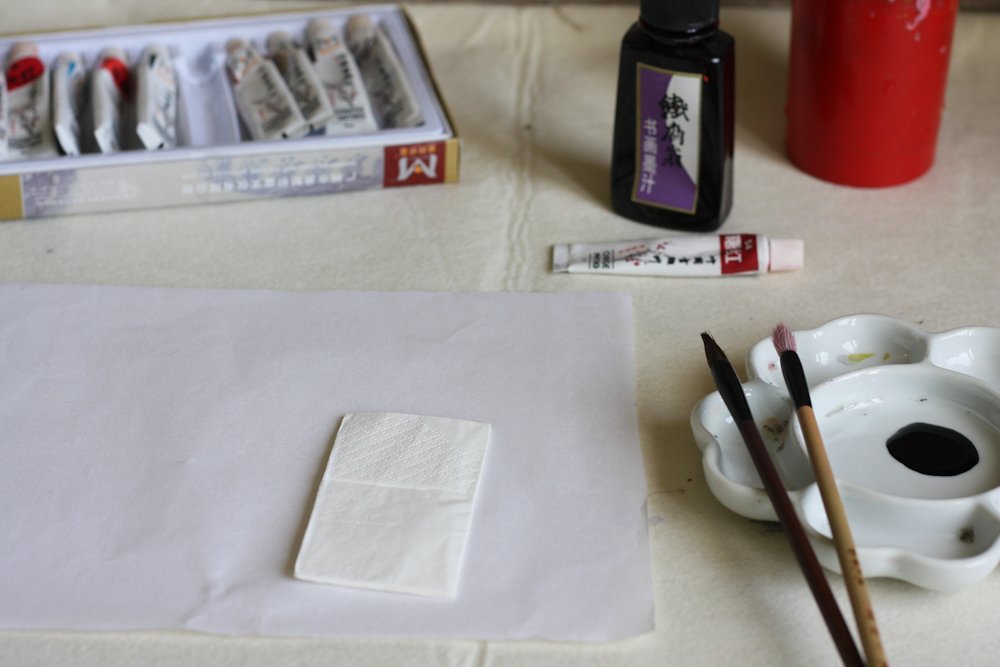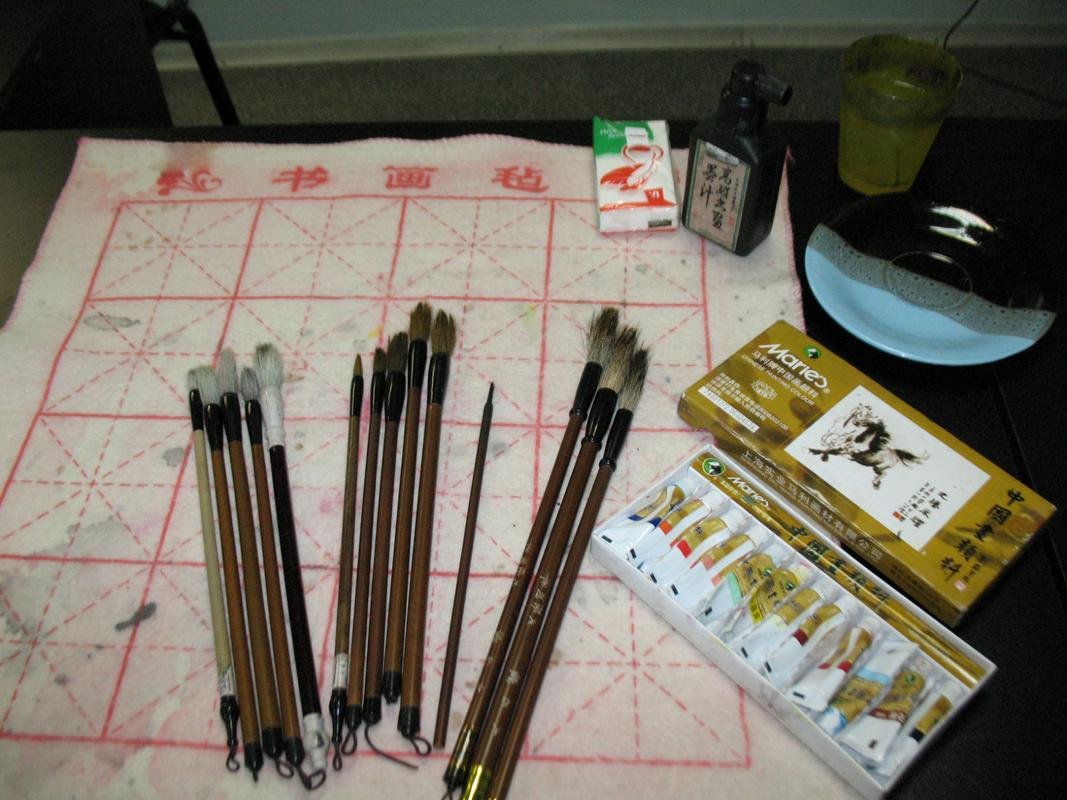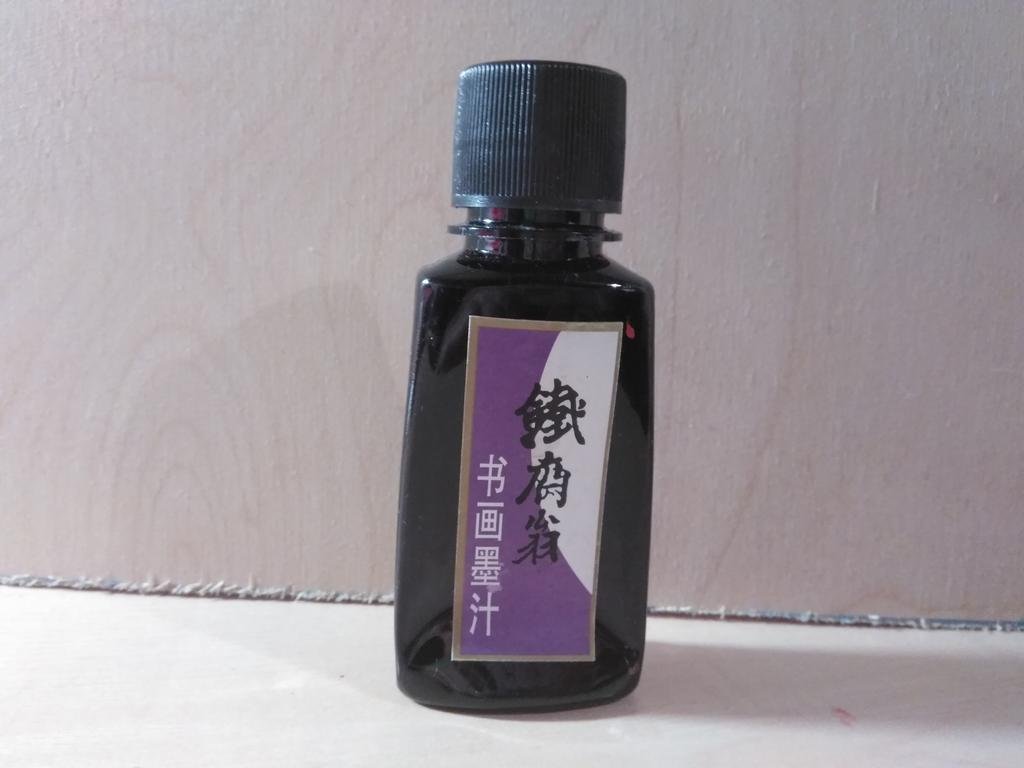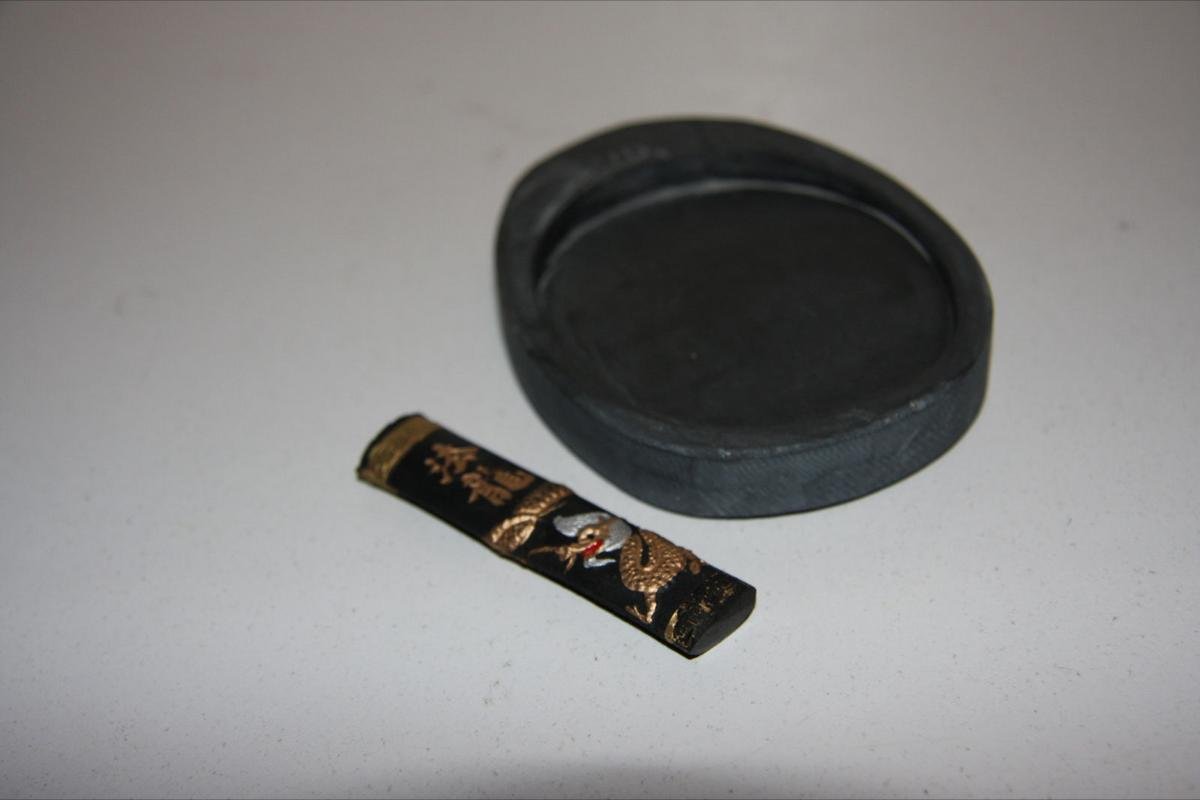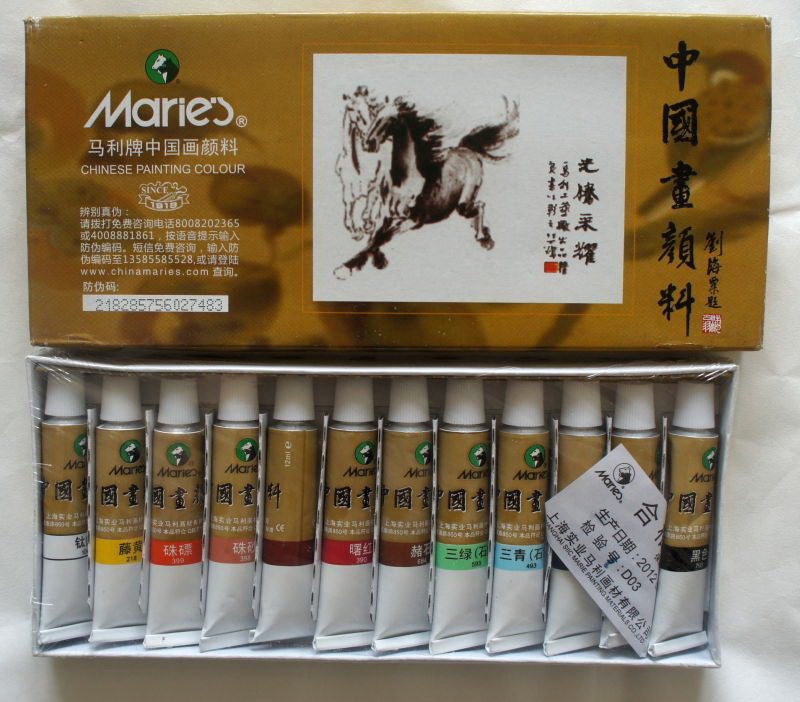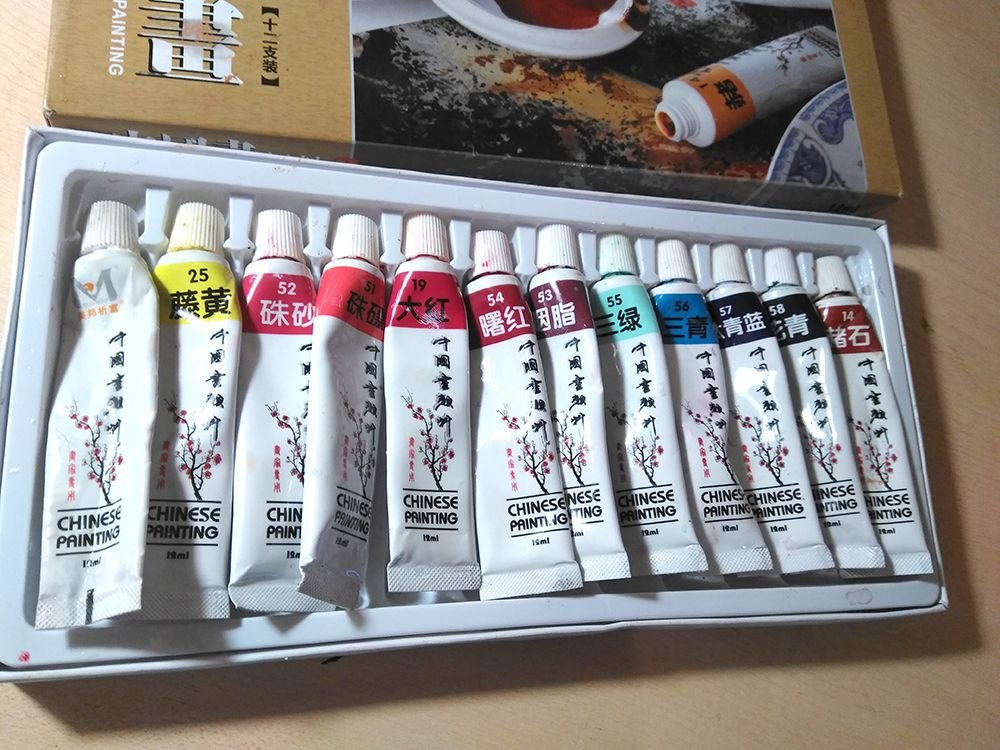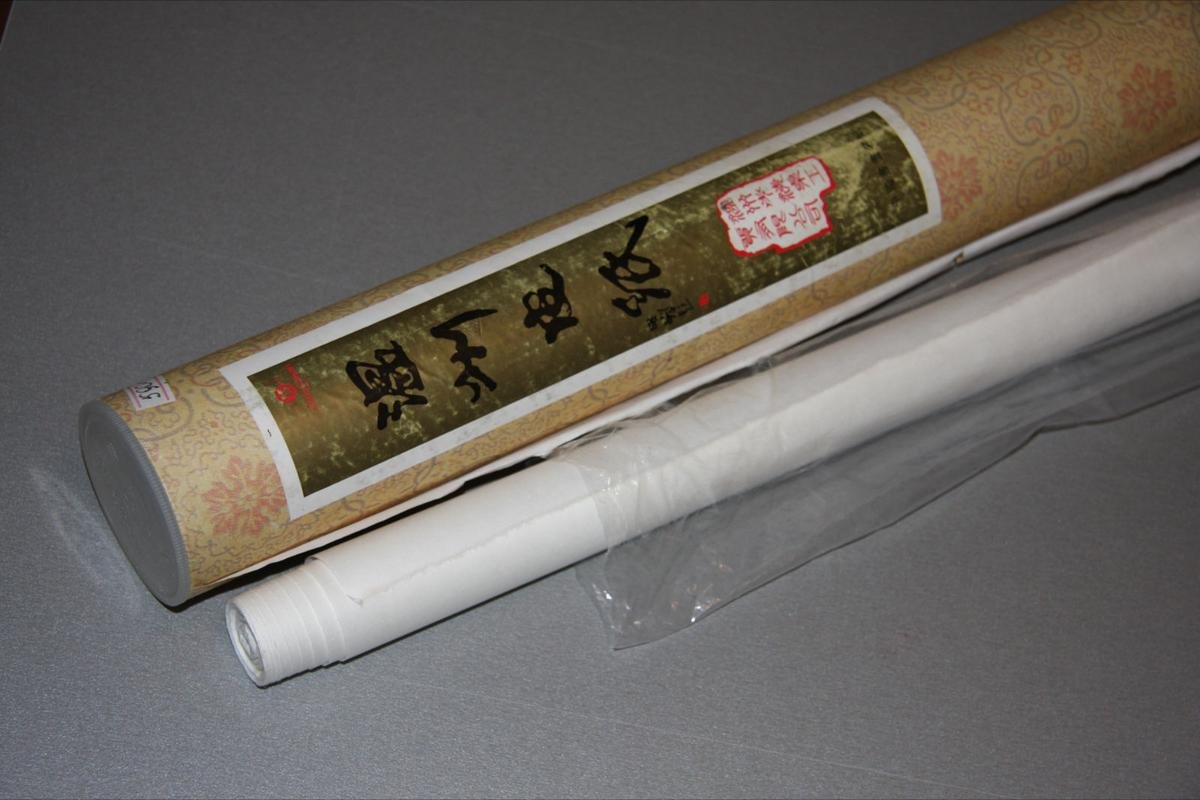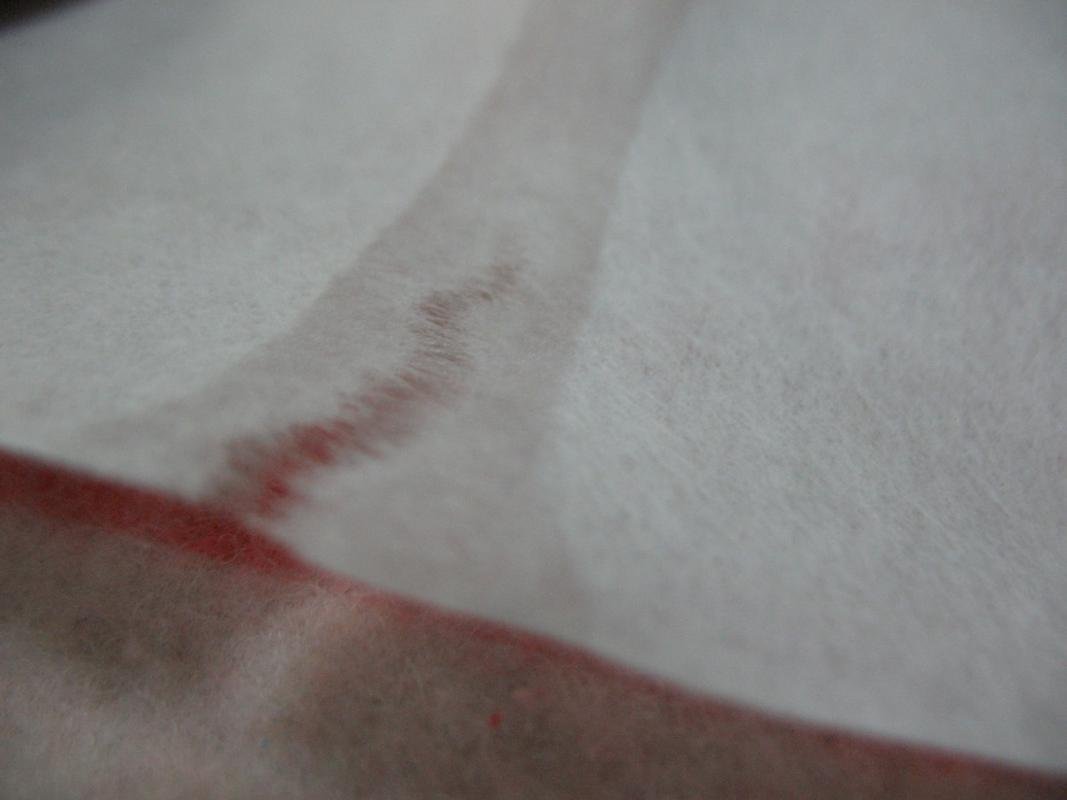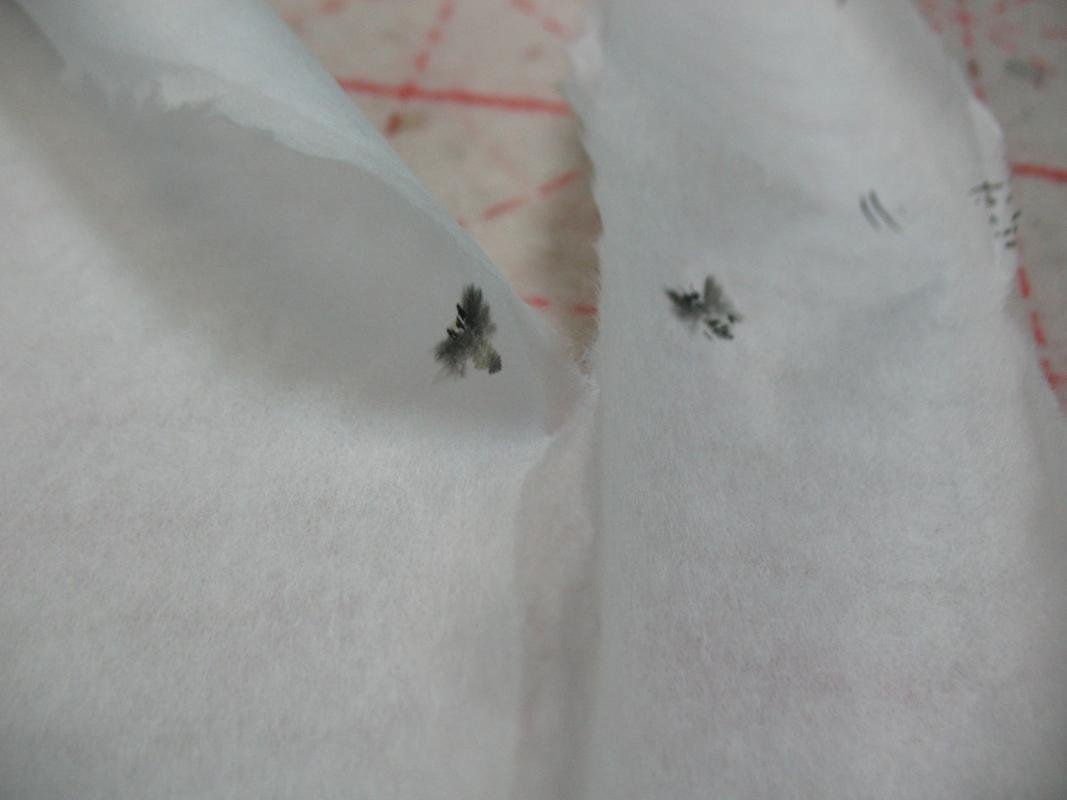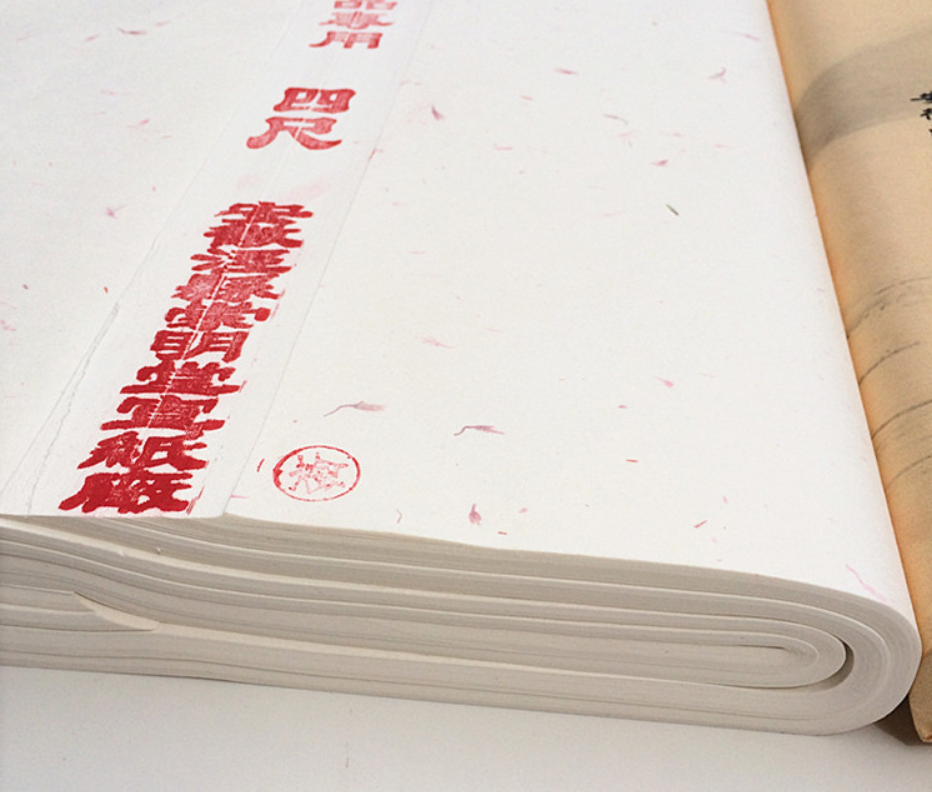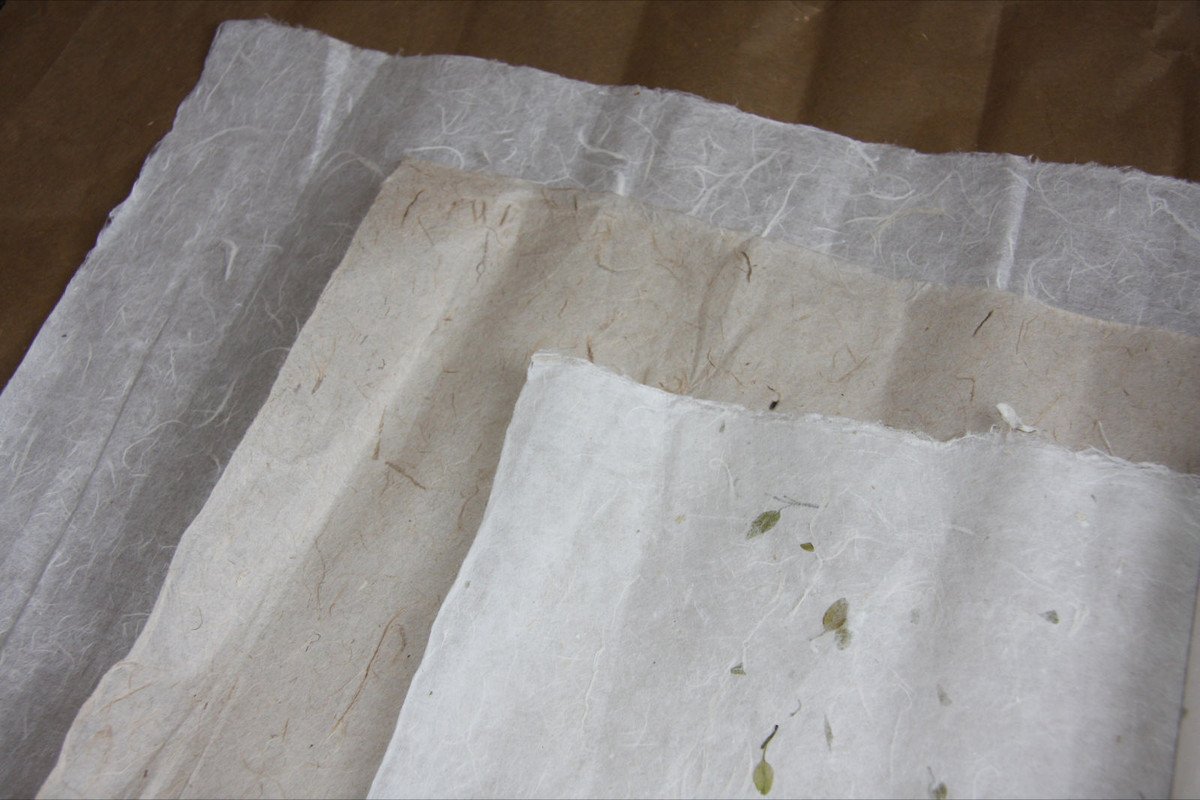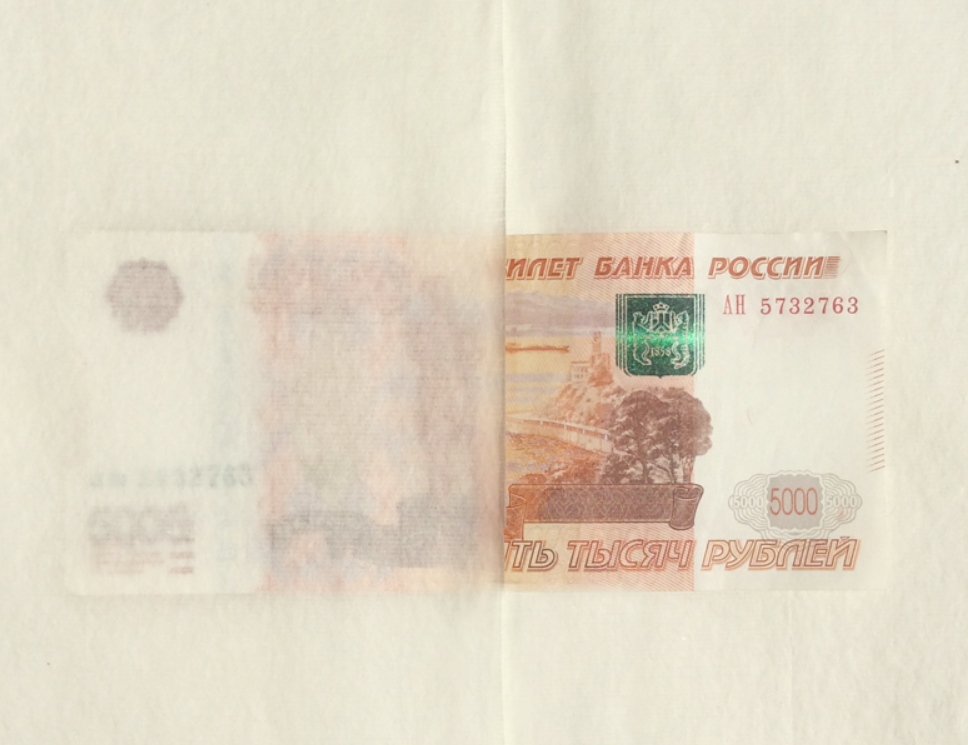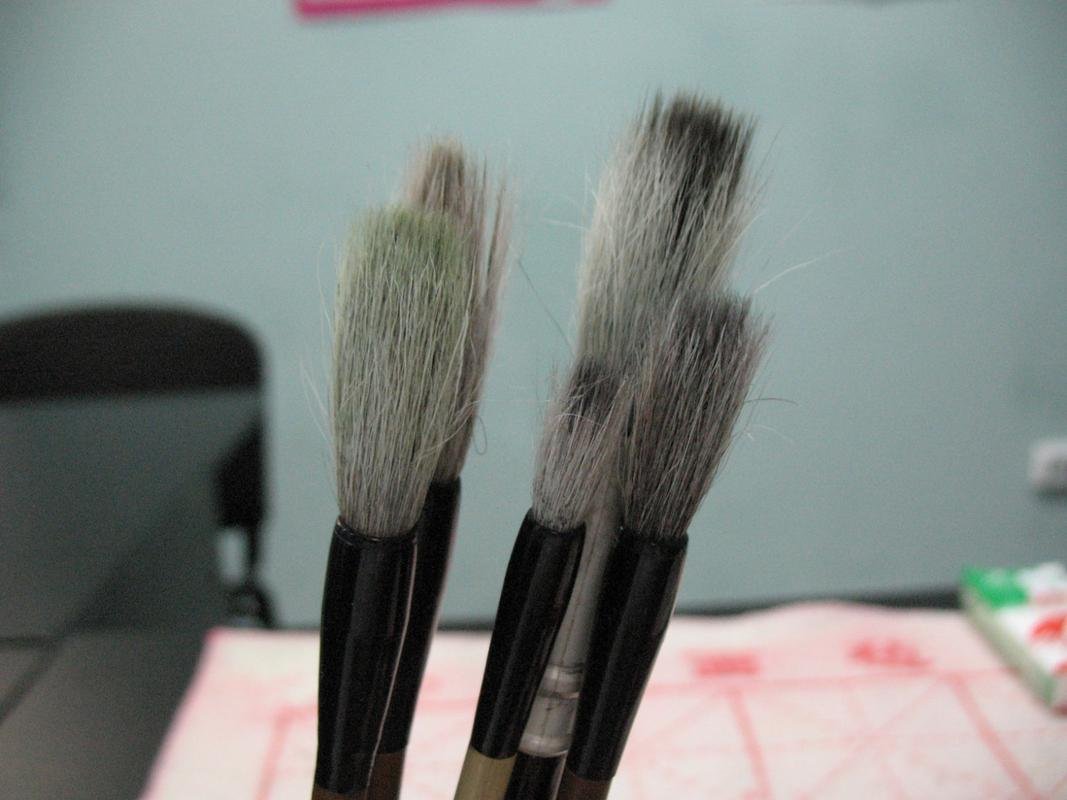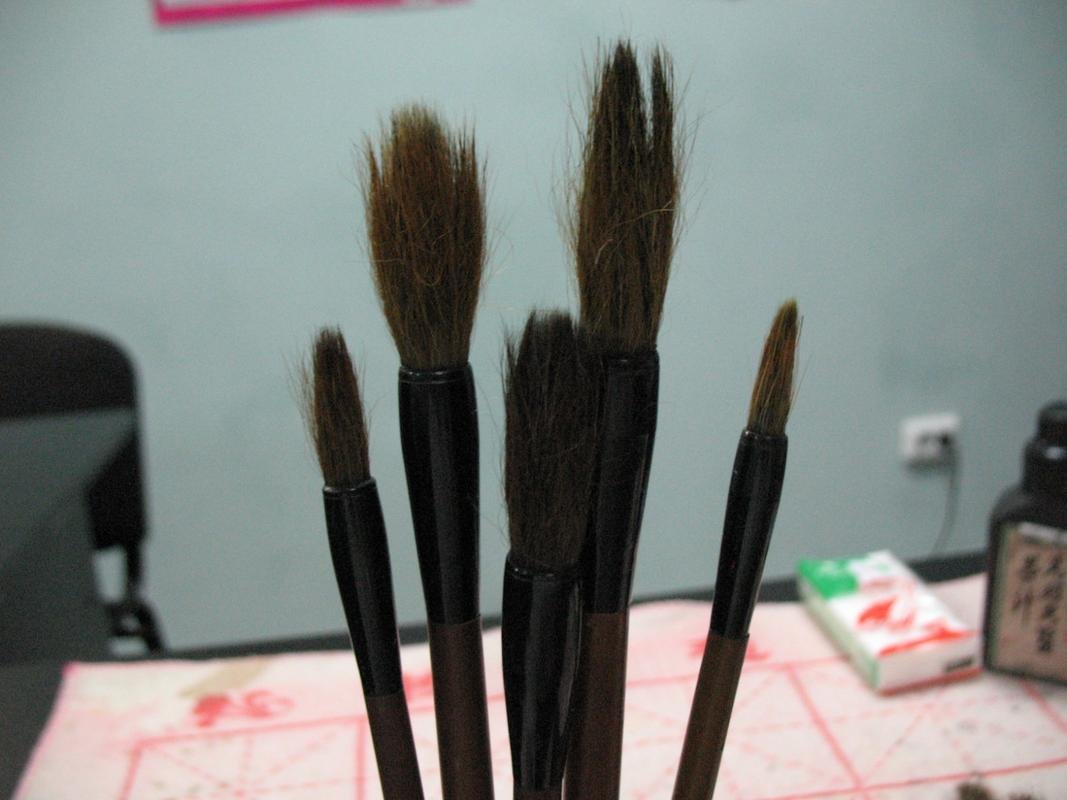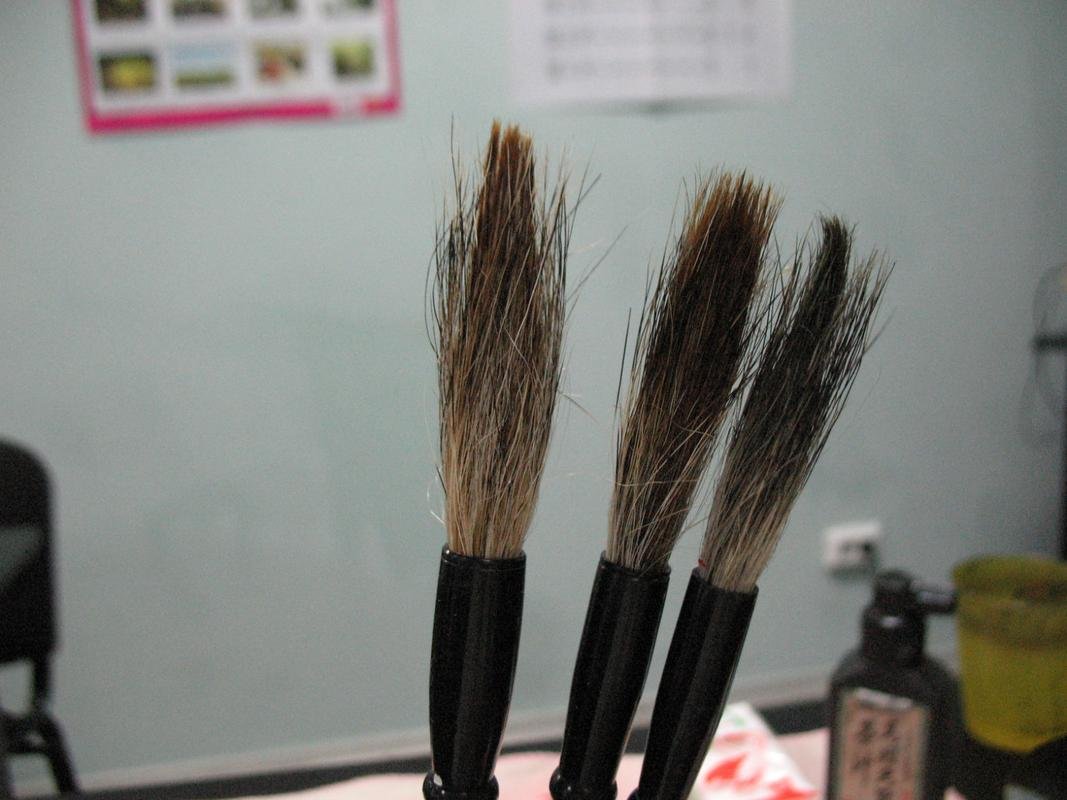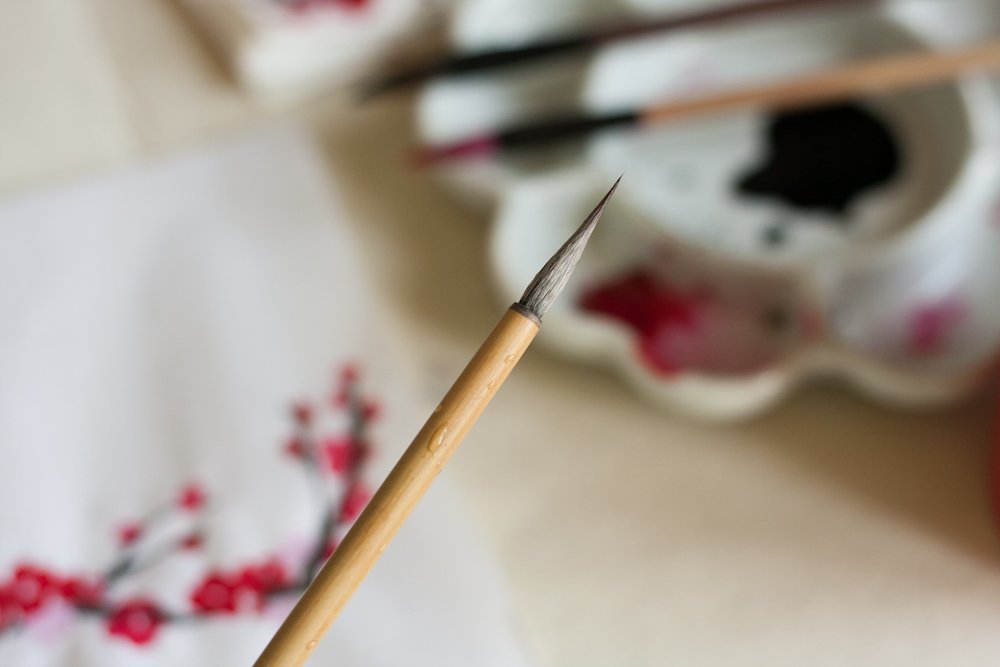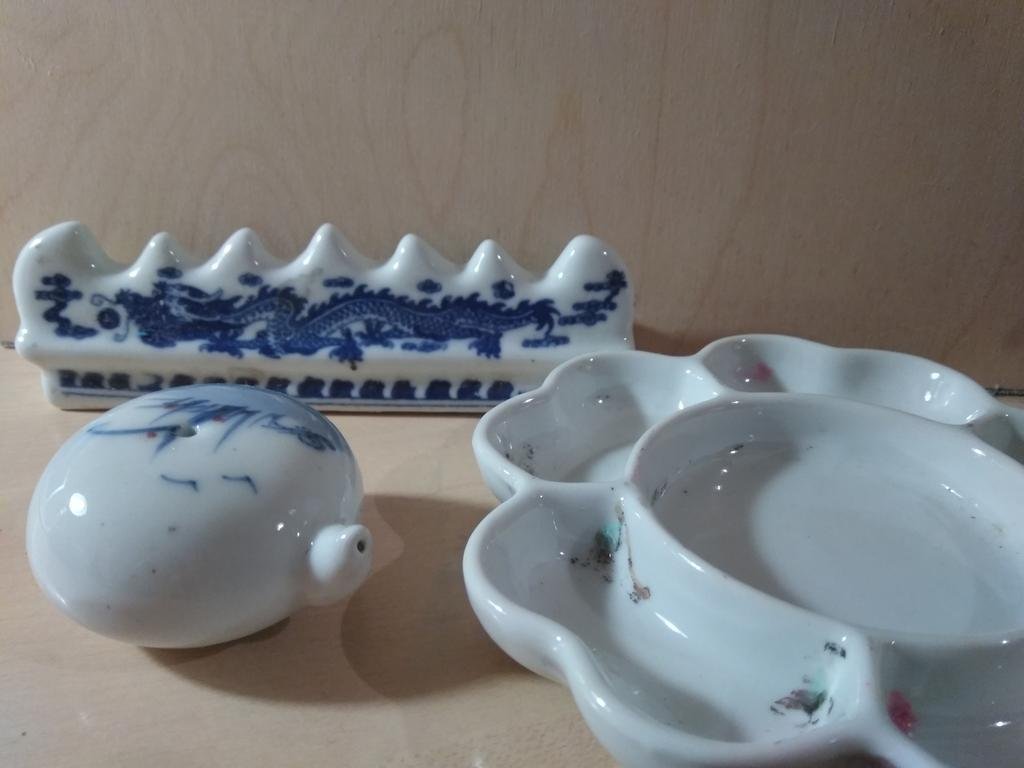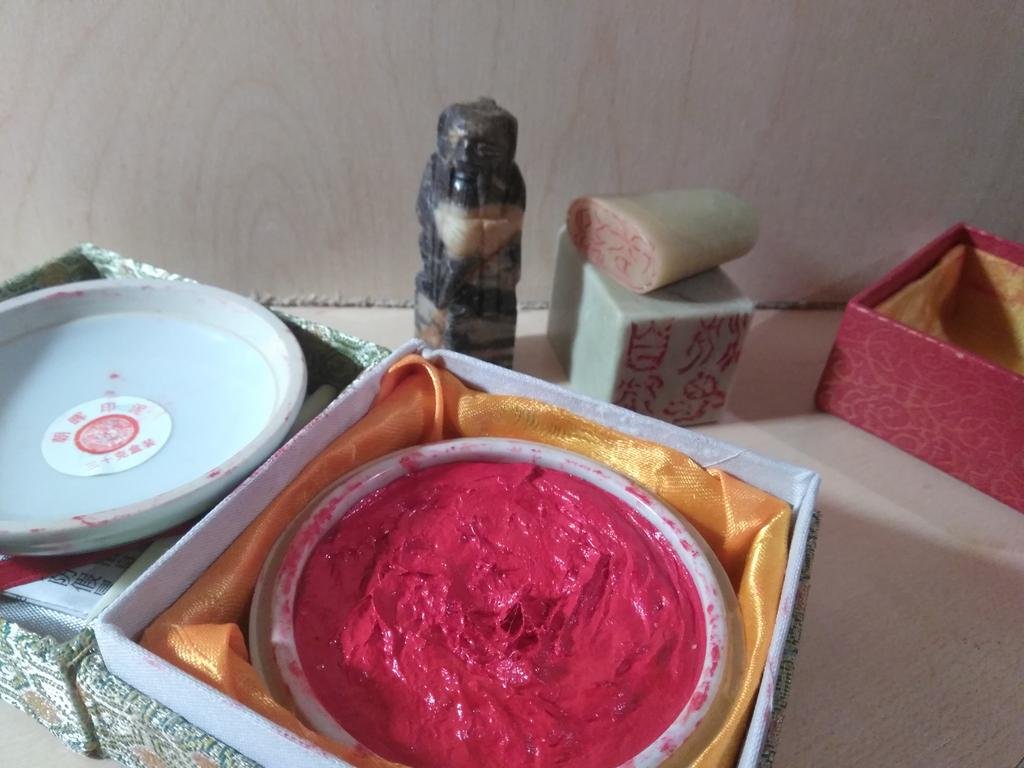Hello dears!
If you want to start painting in the technique of traditional Chinese painting, you will need special materials and tools. I've reviewed it. All materials I buy in specialized online stores, because in the usual stores for artists often do not have the right materials.
My materials
- felt mat
- rice paper
- brushes
- Chinese ink
- Chinese mineral paints
- Chinese mineral paints
- napkins
- palette and glass of water
1. Felt mat
Felt Mat is always put on the table under the rice paper because the drawing paper is very thin. The paper gets wet from water, and the felt mat absorbs excess water.
2. Chinese ink
Chinese ink is in liquid form or dry sticks. I use liquid ink. It's easier to dilute with water.
I use liquid ink. It's easier to dilute with water. Dry ink sticks have a more traditional material. It looks like this.
Stick ink rubbed in a special stone palette with a few drops of water. Dry ink is ground with an effort. This ink is well suited when many shades of gray are required.
3. Chinese mineral paints
The most famous paint – a paint company Maries. On their box there is a picture with horses.
Recently began to appear, and other Chinese paints . Now, for example, I use these:
Chinese mineral paint is not a watercolor! They are different in their properties. They are diluted with water, but do not spread in multi-layered painting, as watercolor spreads.
As you can see, the color scheme for a set of 12 colors is peculiar. The green color in the palette is one, and is represented by a whitened emerald. All other green shades in the pictures are obtained by mixing yellow, black and blue on the palette.
In the box most of the reddish tones. The fastest way is usually yellow. The most unused color is black because it is replaced by black ink. Also in the box of Chinese paints there is always a white color, which is used as intensively as yellow.
4. Rice paper
Rice paper is sold in rolls or in separate sheets. In rolls cheaper. I like rice paper in rolls, because it does not crumple and is compact stored. I am convinced that it is necessary to start learning to draw on cheap rice paper, because many unsuccessful drawings will have to be thrown away.
If there are no scissors at hand, then you can cut the paper in the following way: hold with a wet brush and tear it wet.
Rice paper sometimes has two sides: one is rough, the other is smooth. The choice of hand depends on the plot. On a rough surface paint and ink spread better. This is suitable, for example, for the image of animal hair. The smooth side is suitable for drawings with clear contours.
Rice paper sometimes has two sides: one is rough, the other is smooth. The choice of hand depends on the plot. On a rough surface paint and ink spread better. This is suitable, for example, for the image of animal hair. The smooth side is suitable for drawings with clear contours.
**Paper in sheets
Paper in sheets is more expensive and professional paper. It can be of different quality, purpose (for example, landscape), as well as different shades.
This paper can be with the addition of gold foil or herbal fiber.
Gongbi paper is a special kind of paper for painting in the style of Gongbi. This paper is the thinnest and most transparent. This paper is impregnated with alum, so it does not absorb ink and paint. This paper is designed for multi-layer color fills.
5. ** Brushes**
Chinese brush conveniently stored in these bamboo canisters:
I have a lot of brushes. Some were brought from China, some were bought in art stores.
New brushes are glued with glue. They're sharp and hard. Quality brushes can be checked only after purchase, when I soaked the glue. Often this is a lottery, so it is better to buy brushes in specialized places where the seller knows about the quality of the brushes.
Brushes can be divided into 4 conditional groups:
- soft
- medium hardness
- hard brushes
- thin outline.
A soft brush.
Soft brushes are white and made of goat hair. They are designed to draw soft, round shapes.
Brush of medium hardness.
Brushes of medium hardness are made of wolf, badger, bear hair. These brushes are more elastic. I draw with them mountains, trees, thin blades of grass and branches.
Hard brushes.
Hard brushes are made of tough animal fur. They do not have gun hair, so these brushes do not hold water well. I use these brushes when I paint the texture of mountains and stones.
Thin counter-brushes.
Thin counter brushes are designed for very thin lines, stroke, stamens, etc.
6. Napkins
Napkins that absorb excess water from the brush-a necessary material in Chinese painting.
7. Palette and other accessories
I use a ceramic palette or plates. It's better than plastic.
In the photo you can also see the stand for the brush, which I also use as a press for rice paper. This is often necessary because the paper is not fixed and can be wrapped around corners.
Spherical ceramic container is a water dispenser. With it, you can add the required number of drops in the ink.
8. Stamps
In Chinese paintings, in addition to the lyrical signature characters, decided to put down personal stamps of the artist. They complement the composition, so everyone who is engaged in Chinese painting, sooner or later puzzled by the search for seals.
Procurement of stamps you can buy in stores. But the cut impression will have to be ordered from the master.
The seal is stamped with red cinnabar paste.
At the end of the article, I want to warn you against buying ready-made calligraphy kits, which are quite often found in art stores. These sets are souvenir: they look nice, but it is impossible to use them for their intended purpose.
Thanks for your support and comments!


